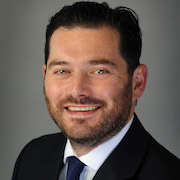What is the medium-term outlook for the CEE region (especially Poland, Romania, Hungary, Czech Republic)?
The CEE real estate market is looking as strong as ever. International and local investors continue to invest into the strong macro-economic proposition of Central and Eastern Europe. The occupational markets are among the strongest in Europe. Yields are still attractive across CEE across all asset classes. We expect investor demand to continue. Core money is keen on Poland and competing for assets in the major cities. Hungary and the Czech Republic see strong demand but following a busy 2017 there is not enough product available. Romania is seeing more activity and should benefit from the competition for assets in the other CEE Markets.
From a hotels perspective, the key CEE markets continue to enjoy a period rapid of growth in business and leisure tourism from both domestic and international sources. Markets such as Budapest, Bucharest, Prague, Warsaw and Krakow all recorded a record number of arrivals and overnight stays in 2017. The relative lack of political instability in CEE markets and absence of major safety concerns has benefited the region. This is all filtering through to hotel performance and the key CEE markets have been witnessing impressive room rate growth yet still operate at a marked discount to other European cities. Budapest, Prague and Warsaw all reported double digit percentage growth in RevPAR in 2017 while Bucharest also posted a 6.8 % growth. Investors recognize there is more growth to come through on the trading side and potential to acquire at more attractive yields than many of the more established European markets are offering. While some other European markets may be seen as being at the latter stages of a peak in the cycle, there is a confidence that the many central European markets have a way to go.
We expect this growing appetite from investors for hotel assets to continue in the short-medium term. If you look at the GDP forecast over the short and medium term, central European countries are expected to grow significantly ahead of the European average. There is a real sense that a number of these CEE markets represent developed economies rather than emerging economies and the significant investment we have witnessed from institutional investors supports this. We anticipate a number of further investment deals in these markets over the coming year, both single asset and cross border portfolio sales. However, the outlook is not without some element of risk. In some central European markets we are seeing a marked increase in the hotel development pipeline. We expect this pipeline to be absorbed by growing demand fuelled by further economic development, but there could be some slowdown in KPI growth in the short term, in cities such as Warsaw and Budapest. Further investment in these markets, particularly in respect of their MICE infrastructure will be a key factor in these locations driving less price-sensitive tourism. The risk of inflation remains as we have witnessed already in the Czech Republic and Romania, while labour shortages are a continuing issue in the hospitality market and labour cost increases have, and will continue to, impact on operational profitability.
How will things continue in Russia?
Russia is a major professional commercial real estate market but has suffered as international sanctions make it harder for international investors to deploy into the market. Russian investors have made up for that as much as they can but investor activity will remain somewhat limited as long as sanctions are in place. The market has a huge potential and has shown before to be able to return to high investment levels in a short time. Positive Moscow and St. Petersburg hotel-market figures indicate a continuing trend of market recovery and growth of tourist attractiveness of both cities. From the investment prospective, we can see that, traditionally, the most interesting is the Moscow hotel market as it is the most developed and stable, followed by St. Petersburg. However, in the first half of 2018 investors were in the waiting mode due to a series of events affecting players’ sentiment: presidential elections, new sanctions and the FIFA World Cup tournament taking place in Russia – all these influenced investors’ decisions.
Hotels, offices or retail – what are the most attractive asset classes? Where do you see potential?
There is potential across all sectors as all major cities have a lot of replacement demand of older stock.

